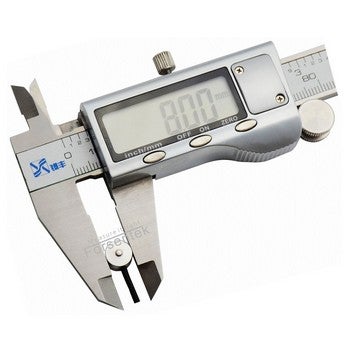
How to pick a load cell
Stage 1---Define your requirements
Calculating range: This can decide the actual load cell capability, potential to choose.
Output transmission: Typical output of the masse sensor is two. 0mV/V, 0-5V or 4-20mA can also be achievable through inner or even external amplifier.
Masse path: Tension? Compression? Pressure as well as compression?
Working temperatures: Various strain gauges and also accessaries will be utilized for different temp. variety.
Material: Aluminum, alloy metal or stainless steel?
Installation: Female/Male thread, In-line, Part Attach, Flange Mount, Thru-hole, or perhaps other structure?
Precision: Diverse application has various mistake tolerance and a few load tissues have relatives low precision.
Environmental safety: Anti-electromagnetic disturbance, anti-explosion, dustproof, waterproof?
Sample frequency: Distinct force sensor has diverse natural rate of recurrence.
Other specifications like electric connection, cable connection length, set up space, and so on.
Step 2---Get to understand about load cell
Fill up cell(Force sensor, force transducer): A measuring device that converts mechanical force in to electrical signal which is actually proportionate to the used force.
Ranked capacity: The actual maximum axial fill up which the transducer is created to calculate within the specifications. Energetic redundancy ought to be considered when selecting the capability.
Rated output(Sensitivity): The particular sign produced by pressure transducer whenever rated ability is utilized, expressed within terms of mV/V.
Quality: The smallest change inside mechanical enter which generates a detectable enhancements made on the particular output signal.
Zero stability: The output signal associated with the push sensor along with no-load employed.
Non-repeatability: Typically the maximum difference among power sensor output blood pressure measurements with regard to repeated loadings below similar loading and atmosphere circumstances.
nonlinearity: The maximum change of the calibration competition from the straight line attracted between no-load and ranked volume outputs, measured upon growing load only.
Hysteresis: The utmost difference between typically the load cellular output psychic readings for the same put on load; one reading acquired by increasing the weight through zero and often the other through decreasing the actual load from scored outcome.
Creep: The improvement in basket full sensor output happening together with time, while under masse, and with all environment problems and other factors remaining continuous, defined simply by a certain period such as 30min.
Safe overburden: Often the maximum load that may be used without generating a permanent change throughout load cell overall performance. Specific as a percentage from the capacity (i. e. 150% of F. S. ).
Ultimate overload: The optimum fill up that can become applied without actual physical damage to force sensor. Particular as a percentage in the capacity(i. e. 200% regarding F. S. )
Paid out temperature: The range involving heat over which the particular load cell will be paid out to maintain rated result and zero balance inside specified limits.
Operating temp: The limits of heat range within just which the drive transducer will certainly operate without having permanent negative change in order to any of its efficiency characteristics.
Temperature shift in zero: The change with absolutely no balance due to be able to a change in pressure sensor working temperature.
Temperatures effect on output: The actual difference in output due for you to a change in weight cell working temperature.
Organic frequency: The frequency connected with free oscillation under no-load conditions.
Step 3---Choose appropriate load cell according to help the application.
With the advancement of sensor technologies, customized design is getting progressively common. Customizable variables consist of:
Capacity
Rated output(mV, 0-5V, 0-10V, 0-20mA, 4-20mA)
Material(Al, alloy steel and steel steel)
Dimensions
Electrical link
Ingress protection class
Operating temp.
Other parameters are essential to your application.